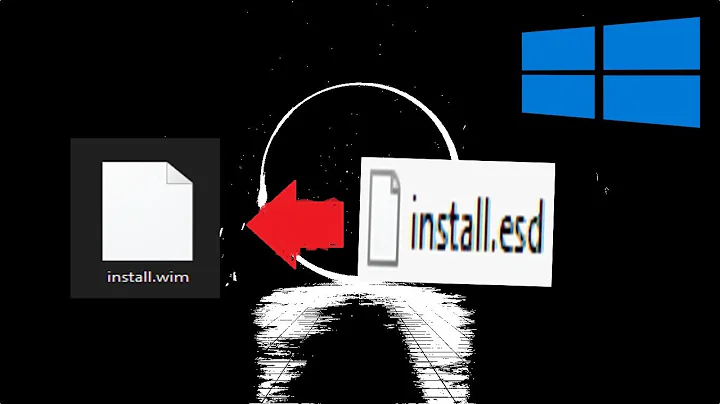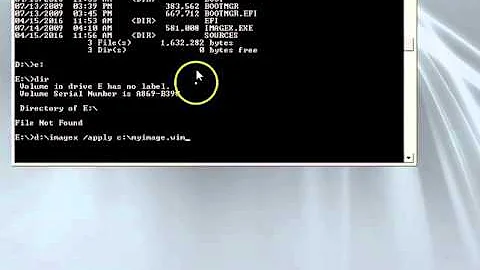Best way to integrate applications to windows 7 install.wim image
I would recommend that you take a look into the Microsoft Deployment Toolkit (MDT). With MDT you can have a thin image (i.e. just Windows, or Windows with Office installed), and MDT can install software during the deployment process automatically. What this means is that every time a new version of a program comes out, you just change the application in MDT and the new version will be installed on the next deployment. There is no need to load up the image, uninstall the older version, re-install the newer version and re-capture the image. MDT will also manage drivers and updates outside of the image and will inject/install them during deployment. This short video shows a MDT setup with applications grouped by department, and the task sequence used for deployment will select the proper application group for deployment using selection profiles. This TechNet article will help you setup MDT with Operating systems, Applications and task sequences. Many more articles and videos about MDT and deploying Windows can be found on the Springboard Series Deliver and Deploy Windows 7 page.
Related videos on Youtube
cyph3r
Updated on September 18, 2022Comments
-
cyph3r almost 2 years
I have right now an unmodified .iso of a windows 7 32bit and 64bit installation disk. And I need to integrate to that some applications (office, adobe reader etc) and windows updates so that when windows are installed the above applications/updates are already installed and working.
Requirements:
- My output has to be a install.wim image containing the new/improved windows installation files because the deployment is done via a pxe server and a custom windowsPE enviroment.
- The procedure to create the install.wim has to be as automatic as possible. I can't create it manually every time I want to incorporate a new windows or application update to the image.
The image will be installed on 100+ computers so it needs to be 'generic'.
I've never done something like this before but from what I searched a possible solution to this issue would be:
- To create a reference installation (preferably on a vm so I can take snapshots) complete with its applications/updates/settings.
- After the complete setup I take a snapshot of the installation
- Run C:\Windows\System32\sysprep\sysprep.exe /oobe /generalize /shutdown to sysprep the machine.
- Boot to a WindowsPE enviroment and capture the .wim image using gimagex.
- Deploy the .wim and enjoy the rapid installation times. :D
Does that sound ok? Would you recommend anything else? Right now the applications are installed after the installation of windows is complete. So the total installation time is quite long. That's why I need a different approach.
-
 Hennes almost 12 yearsThis sounds about right, but I would leave a few applications out of it. Specifically those application with regular serious security flaw, which would need to be updated after an install from a week old generates image. (Mainly I am thinking about acrobat reader, flash etc).
Hennes almost 12 yearsThis sounds about right, but I would leave a few applications out of it. Specifically those application with regular serious security flaw, which would need to be updated after an install from a week old generates image. (Mainly I am thinking about acrobat reader, flash etc). -
cyph3r almost 12 yearsAfter the installation another program manages the update of the applications so that every system is always up-to-date therefore I don't have to worry about that. Even if there is a security flaw in one version it will be updated right after the installation. The main issue is incorporating the slow-to-install applications like office or ms forefront. :)
-
 Hennes almost 12 yearsOK. I just mentioned it because we did something similar with XP images. We updated those images twice yearly, which meant that a fresh image would deinstall several old applications (specifically adobe reader, adobe flash and winzip) and then install a newer version. We eventually removed those to gain speed. Office and other large applications where left in. I guess it comes down to a balance of easy for initial installation, image maintenance and a selection of what to include in the image and what to install later.
Hennes almost 12 yearsOK. I just mentioned it because we did something similar with XP images. We updated those images twice yearly, which meant that a fresh image would deinstall several old applications (specifically adobe reader, adobe flash and winzip) and then install a newer version. We eventually removed those to gain speed. Office and other large applications where left in. I guess it comes down to a balance of easy for initial installation, image maintenance and a selection of what to include in the image and what to install later. -
HopelessN00b almost 12 yearsIf you're going to go through the effort of setting up an imaging solution to push disk images to clients, I'd take the minimal extra effort to actually setup a proper one, based on Clonezilla or FOG (free open ghost)... or put up with long deployment times by just setting all the installs to cook overnight. It's what we do with SCCM/WDS, and so what if it takes 4 hours? It happens during the ~16 hours no one's around anyway, so... no big deal.
-
cyph3r almost 12 yearsUnfortunately I don't have the permission to change the whole deployment method etc. I am only in charge of automating the image creation. :)
-
HopelessN00b almost 12 years@cyph3r So set it up on the side. (It can use WIMs as an image type.) That's how I got FOG into one of my old shops. "Oh, yeah, I got the machines for those 12 new hires imaged over lunch with this thing I've been playing around with... yeah, you can take a look... no, I don't think it would be that hard to use as our imaging system..."




